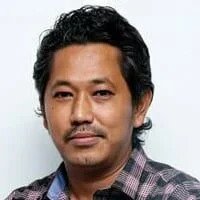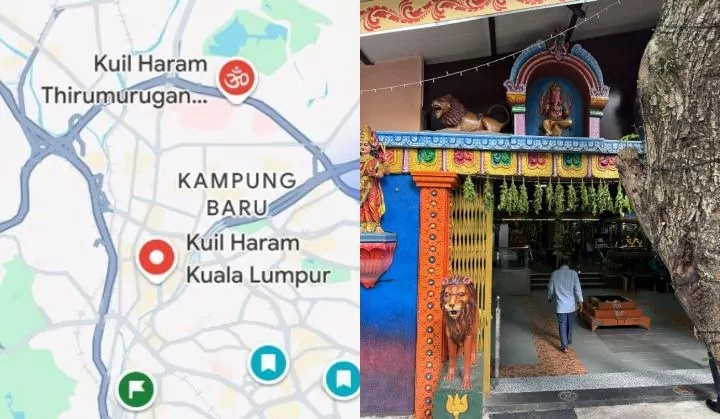
What the Temple relocation, “Kuil Haram” and a call to “wage war against the Indians” means to the Indian community?
5 Apr 2025 • 4:00 PM MYT

TheRealNehruism
Writer. Seeker. Teacher

TheRealNehruism
Writer. Seeker. Teacher

Image credit: The Rakyat Post
When it is said that “we Malaysians should be united, and not let race and religion divide us”, I have always felt that the call to be unrealistic and without insight.
Realistically speaking, we still identify more with our racial identify more than our national identity, and it is unlikely that we will be able to unite our racial identity behind our national identity, when as races, we all have different problems to deal with.
As a rule, I believe that the problem with the Malay-Muslim identity group is that they are unable to assert their dominance despite being the major identity group in the country. An identity group has successfully asserted its dominance when the other identity groups around it imitate or mimic its identity features. Globally, we can say that the American identity has been able to stamp its dominance, because globally, the features of the American identity, like its language, music, attire, worldview and culture, is imitated and mimicked widely.
Nationally however, despite the Malay-Muslim identity group being the dominant identity group, the other identity groups in the country are reluctant to adopt their language, attire, music, worldview and culture. The reluctance of the other identity groups to adopt their identity feature, is then causing a relentless doubt to afflict the collective consciousness of the Malay-Muslim identity group, as to the true state of their dominance.
As for the Chinese, their primary problem likely has to do with their declining social status. In the past generations, the Chinese tended to identify as owners or bosses, or a race that employs other races to work for them. In the coming generations however, the Chinese might identify more as a race that is employed by other races, rather than employ other races, and this decline in status is probably the number one issue that is affecting the Chinese identity group in the country today.
As for the Indians, our primary problem is likely existential. Amongst all the major races in the peninsular, Indians are likely the only race that is facing a situation where our identity features are facing erasure.
As it is, we are the only race in the country without an effective political leader or party to represent us. Other than the loss of political representation, we are now faced with the issue of our temples – even old ones – getting demolished or relocated.
In the next 50 years, most of the descendants of the Malays and Chinese will still likely identify as Malays or Chinese, but it is hard to say if the descendants of the Indians will still identify as Indians or whether they will identify as Malaysians, Malay, Muslims or Christians instead.
As a rule, most Indians today only have scant memory of their great grandparents or great great grandparents, who first came to Malaysia from India, likely because the second wave of immigration of Indians to this part of the world, which occurred in the 19th and early 20th century, were made by the salt of the earth sort, that worked as labourers and coolies.
We have only scant memory of our working-class ancestors, because it is only the names and faces of elites that live in the pages of history. The lives of ordinary people, on the other hand, tend to live chiefly through the habits, beliefs, culture and customs of their descendants.
When we wish to honour our ancestors, we do so not by remembering their names and faces, but by embodying their beliefs, habits and customs into our lives.
The names, faces and achievements of elites might be remembered singularly in and of itself, but the memories of ordinary people live in the community that they leave behind.
The axis of the community life that our ancestors have left behind us, revolves around the temple, especially the older ones that they themselves built. It is these temples that connect us to the memory of our ancestors.
Race is literally tied to ancestors. We are Indians only because we are tied by lineage to our ancestors. If the ties between us and our ancestors are unraveled, we will simply cease to be Indians.
I have already mentioned previously, that if we Indians are not careful, we are going to be extinct within a few generations.
To become extinct, all that needs to happen is that we lose our connection with our ancestors.
It might be the case that our extinction is inevitable – there are a variety of reasons why an identity becomes extinct, and not all of them are the result of eradication – in many cases, an identity will become extinct naturally, simply because the conditions for them to continue to exist are no longer present.
To be frank, the conditions that will allow the existence of an Indian identity outside of India, in a nation where we are not only a minority identity, but a minority identity that is not distinguished in wealth, power or achievement, is not going to be easy.
Without political or power structure, our community lacks the centripetal force that will compel it to remain intact. Without wealth to spread around, it is difficult for members of the community to interact in a meaningful or purposeful manner. Without achievements, the community members will be hard pressed to identify with the community with a sense of pride and self-respect.
Considering that our community, like the proverbial frog, has been slowly boiled to extinction without us being aware of our situation, that such issues of the relocation of the 130-year-old Pathrakaliamman temple in KL, as well as the existence of a a Facebook group that is dedicated to locating Hindu temples that were allegedly built illegally nationwide, or the recent issue of an X user that is referring to Indians in derogatory term as well as calling for war to be waged against the Indian’ for supposedly building hundreds of illegal temples, as well as sudden Increase of places marked as “Kuil Haram” On Google Maps, might be the wake up call that our community needs in order to engage with our predicament.
Our temples, especially the old ones, are the last bastion of our identity. If they are gone, we might as well cease calling ourselves as Indians.
Our extinction as an identity group or a race might be inevitable – nothing lasts forever after all – but even if this be the case, I think we owe it to ourselves and our ancestors, to at least face our extinction in a manner that will allow us to fade away in a dignified and honorable manner.
Our descendants someday might no longer identify as Indians – instead they might identify themselves as Malaysians or Malay or Christians or Muslims – but if we were to ride into the sunset in a dignified and honorable manner, at least they will remember that their ancestors were Indians, even if they no longer identify as Indians.
Now, it is too early to say whether the temple relocation, Kuil Haram or wage war against Indians episode is but a knee-jerk reaction to the increased racial tension we have been experiencing recently or a sign of a bigger problem, but the silver lining in the cloud is that these issues should awaken us to the existential crisis that we are facing.
Like Sun Tzu said : “Tactics without strategy is the noise before defeat.”
To spend all energy, resources, effort, time and attention defending each and every temple that is earmarked for demolishment or relocation, or clamor for action to be taken against every individual that or Facebook group that is desirous of their demolition, is futile – it is nothing more than the noise before defeat.
The bottom line is that we need to accept the fact that we are a small identity group that represents just 7 percent of the national population, before coming up with a strategy that will either prevent the extinction of our identity or to allow our identity to ride into extinction in a dignified and honorable manner.
We can’t forever be stuck firefighting against every temple that is earmarked for demolition or every individual that speaks ill of our community.
To do so is like lashing out or crying over the loss of a tree, when the entire forest is on fire.
The death of a soldier will not be in vain if the army wins or survives the war.
In the same way, the loss of a temple, or every pain, insult or humiliation that have to suffer, will not be in vain, if it at least awakens us to the reality of our extinction, and come up with a strategy, that will address the issue of the continuity of our identity, or at least, prepare us to face our inevitable extinction, in a honorable and dignified manner.
***
kt comments:
For Malaysian Indian Hindus:
(a) Identify all so-called 'haram'-ish temples,
(b) Buy up all associated still-unowned land of temples,
(c) via Tin Milo donations & generous donations from the wealthy (of all races, if possible)
Do it now!!!
Kuil built thousands of years ago should not be roboh-ed and another religion’s dome built on top. Now kuil’s worshippers can only bawl and Wail against the Wall outside.
ReplyDeleteMfer, u meant that wailing wall of the zionist fart, right?
Deletehttps://www.culturalworld.org/what-is-the-wailing-wall.htm
DeleteSo, that zionist grandmother story repeated to justify the zionist mfering entitlement to the land!
Delete"It is these temples that connect us to the memory of our ancestors"
ReplyDeleteYes Indeed. The memory of our ancestors from thousands of years ago (not a mere 135 years), destroyed by the newcomers who roboh-kan our Kuil (Temple) and built their place of worship. Now we can only Bawl and Wail along the outside Wall. Tak boleh masuk pun.
Keep repeating yr zionist grandmother story in disguise!
Delete